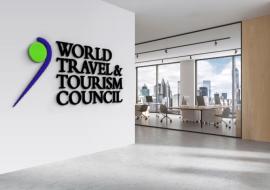International Tourism Grows by 5% in Q1 2025 Despite Global Challenges

International tourist arrivals grew by 5% in the first quarter of 2025, with more than 300 million tourists traveling globally. This figure is around 14 million more than the same period in 2024 and exceeds pre-pandemic levels (2019) by 3%, according to the May 2025 UN Tourism World Tourism Barometer.
UN Tourism Secretary-General Zurab Pololikashvili highlighted the sector’s resilience, stating that international tourism continues to support millions of jobs and businesses worldwide, despite geopolitical tensions, inflation, and economic uncertainty. Increased visitor spending in many destinations has further strengthened this recovery.
By region, Africa recorded the highest growth with a 9% increase in arrivals, surpassing 2019 figures by 16%. Asia and the Pacific followed with a 12% rise, led by Northeast Asia (+23%). Europe welcomed 125 million tourists, a 2% increase, while South America stood out in the Americas with a 13% growth. The Middle East saw modest growth (+1%), but arrivals there remain 44% above pre-pandemic levels.
According to IATA, international air passenger demand rose by 8% in Q1 2025 compared to the previous year, while air capacity increased by 7%. Hotel occupancy rates remained steady at 64% in March 2025.
There was also strong growth in tourism revenues. For instance, Spain saw a 9% increase in the first two months of 2025, following a 16% rise in 2024. Other notable performances came from Türkiye (+7%), France (+6%), and Japan (+34%). In the United States, the top global tourism earner, revenues increased by 3% in early 2025.
Revised data show that international tourism export revenues reached an unprecedented USD 2.0 trillion in 2024, accounting for 6% of total global exports and 23% of global service trade. The average international tourist spent USD 1,170 in 2024, above the pre-pandemic average of USD 1,000.
Spending from key source markets contributed to this rise, especially China (+30%), Saudi Arabia (+17%), Spain (+14%), and Canada (+13%). This financial momentum reflects strong post-pandemic recovery in both arrivals and expenditures.
Looking ahead, the UN Tourism Expert Panel identified major risks such as weak economic growth, rising travel costs, and increased tariffs. Geopolitical uncertainty and lower consumer confidence are also expected to affect travel decisions, possibly leading to shorter trips and closer destinations.
Despite these risks, the UN Tourism Confidence Index shows moderate optimism for the Northern Hemisphere’s summer season (May–August 2025), with 45% of experts expecting better results than in 2024. The sector remains resilient, and UN Tourism maintains its forecast of 3% to 5% growth in international arrivals for the full year.














